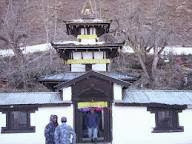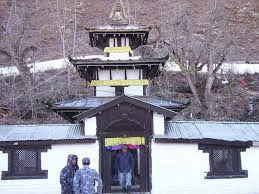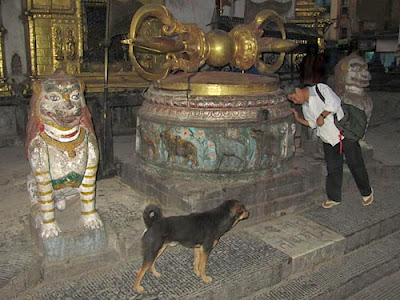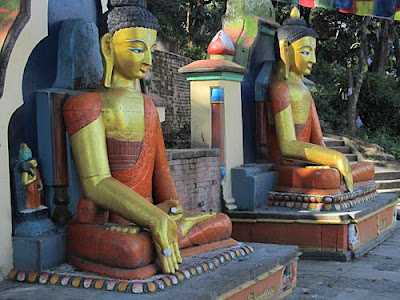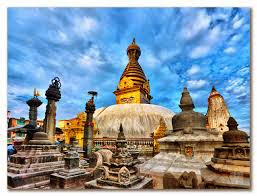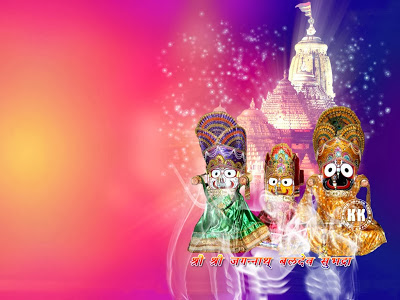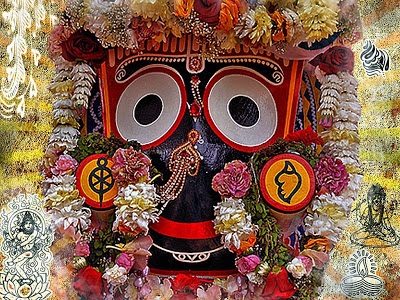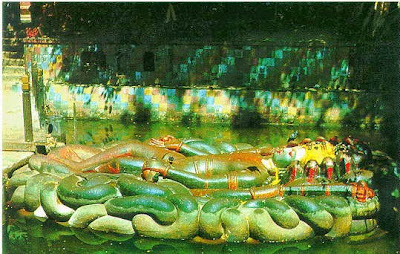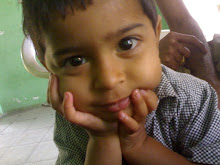Muktinath Temple in Nepal ... beckoning the believer.
SALIGRAMAM, POPULARLY known as
Muktinath, a sacred place for both Hindus and Buddhists, is situated at an altitude of 3,710 metres in the Himalayan Kingdom of Nepal — the summit of Dhaulagiri in Himalayan Mountain Ranges in Mustang District. Hindus call it Mukthi Kshetra
(The Salvation Valley) while Buddhists call it Valley Chumming Gyatsa (in Tibetan language it means the place of 108 waterspouts) and believe that Guru Rimpoche (Padmasambhava) the founder of Tibetan Buddhism meditated here on his way to
Tibet.
The holy shrine, which is said to have risen on its own, is one of eight such shrines (the others include Srirangam, Sri Mushnam, Tirupati, Naimisaranyam, Thottadri, Pushkaram and Badrinath). It is also one of
108 Vaishnava shrines.
Only those who are willing to undergo physical discomfort and rigour can go to Muktinath. Above all, one should have the Grace of the Lord to visit Muktinath. The convenient routes to Muktinath from India are: via Gorakhpur, Sonauli, Bhairawa and Pokhara, the last big town on the way to Muktinath; via Raxaul, Birgunj and Pokhara or via Darjeeling, Siliguri, Kakar Bhitta and Pokhara.
Indian citizens do not need a visa, but must possess some sort of identity, such as ration card, election identity card or PAN Number. There are convenient, buses from Bhairawa, Birgunj and Kakarbhitta, which are the border towns of Nepal, to Pokhara. There is no service road to Muktinath and hence one cannot go to Muktinath either by bus or any other vehicle. After reaching Pokhara one has to go trekking the entire route or travel partly by bus up to Beni or Birethanti (Nayapul) and then either by foot or pony or by flight from Pokhara to Jomson and then again either by foot or pony or by helicopter from Pokhara to Muktinath.
The helicopter is ideal for women and the aged as it lands near the temple. One can return to Pokhara on the same day after taking a holy bath in the 108 waterspouts and worshipping the Lord. There are flights between Pokhara and Jomsom during the day. Royal Nepal Airlines, Gorka Airlines, Buddha Airlines and Everest Airlines fly to Jomsom and back from Pokhara, starting from about 6 a.m. There is no other flight after morning hours due to the strong winds that set in around 10 a.m.
Jomsom, a large village on the way to Muktinath where the trek begins, has hotels that provide boarding and lodging facilities. Generally pilgrims hire well-trained ponies at Jomsom to take them to Muktinath. The pony rider acts as a guide too. It is advisable to take the pony ride, as it is less strenuous when compared to trekking. Because trekking 21 km from about 250 m to 3700 m is no ordinary task. It takes about six to seven hours. As the path goes upward it becomes increasingly difficult to walk for more than 10 minutes without resting. Strong winds blow at a speed of 40 to 50 km from 8 a.m. to 5 p.m.
For half the distance to Muktinath, one has to travel on the Gantaki riverbed after which the route branches off. From there the path slowly winds up dusty mountain ridges with hardly a blade of grass. At the end of the 21 km route there are three villages. As Ranipauwa village is close to the temple and as it has boarding and lodging facilities, pilgrims can stay there.
There are different opinions about the actual Muktinath. While some say there is no other place except this one, there are some who aver that Damodarkund by the side of Gantaki river, 104 km from Kathmandu, is the real Muktishetra and others who claim that Muktinath is another six days travel by foot, where pilgrims can collect saligramams right from the river. Another six days of trekking! That too in difficult terrain where oxygen is scarce! For those of us who cannot even think of undertaking such a journey, it is better to return after worshipping the Lord here — the place Saint Ramanujar visited. There is a minaret recording the visit of Sri Ramanuja giving authenticity to the belief of scores of devotees visiting Muktinath. Periazhwar and Thirumangai Azhwar have sung 12 Pasurams and glorified the deity.
At the temple Presiding deity: Mukti Narayana in a standing posture; Goddess: Sridevi and Bhoodevi; Sacred Water: Chakra Theertham; Tower: Kanakavimanam.
Behind the temple there are 108 faucets in the shape of a head of a bull, closely arranged in a semi-circle with a gap of hardly a foot between the faucets, at a height of seven feet. Water from River Gantaki must have been diverted to flow through the mouth of the bull. Pilgrims who visit the temple take a holy bath in each of these spouts. But as the water is ice cold it requires burning desire and courage to take a holy bath here.
In addition to Lord Narayana, Lakshmi and Bhoodevi the temple depicts brass images of Goddess Saraswati and Janaki and Garuda, Lava-Kusa and the Sapta Rishis. After completing prayer and puja at the temple a visit to Mharme Lha Khang Gomba, the monastery dedicated to Guru Rimpoche (Padmasambhava) with his huge image situated to the North of Muktinath and Mebar Lha Gomba, the monastery of `miraculous fire', with the main deity Chineresig, under which natural gas is continuously burning, situated South of Muktinath temple where Hindus worship the fire as Jwala Mai (Goddess of fire), and also Gomba Samba, a newly built monastery with main deities Sakyamuni, Chingresig and Guru Rimpoche situated at left from entrance gate of Muktinath temple complex, would be worth it.
While undertaking a pilgrimage to Muktinath, it is advisable to cover Lumbuni, Valmika Ashramam, Dev Ghat, Monakamna, Kathmandu, Janakpur, Danush and Varaha Kshetra so as to complete Nepal trip.
